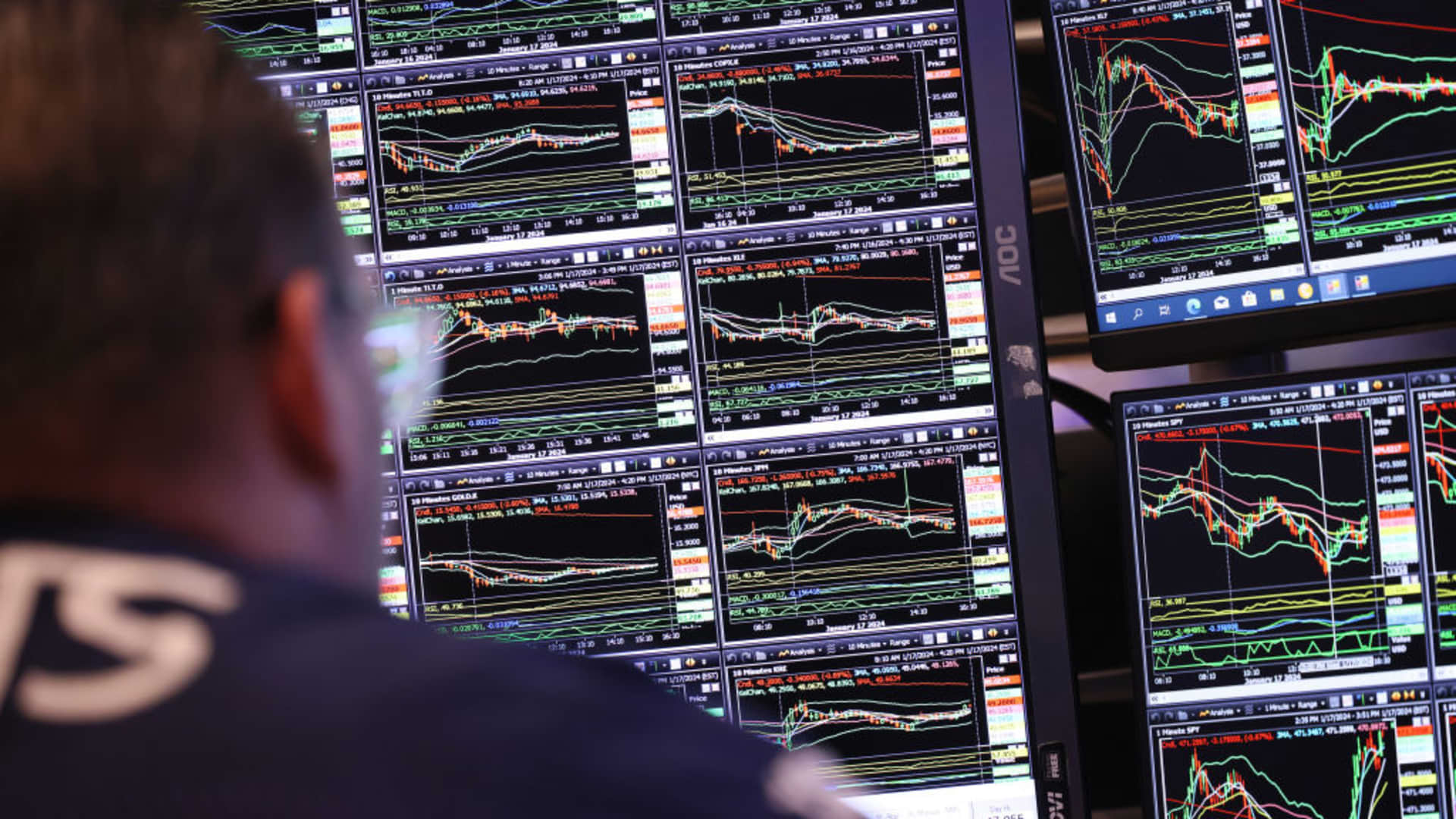Traders work on the ground of the New York Stock Exchange throughout afternoon buying and selling on January 17, 2024 in New York City.
Michael M. Santiago | Getty Images News | Getty Images
Passive funding merchandise have lengthy been pulling in the lion’s share of cash from traders, however as 2023 got here to a detailed they achieved a milestone: holding extra assets than their actively managed counterparts.
The complete assets below administration in exchange-traded funds and notes together with passively managed mutual funds reached a mixed $13.29 trillion on the finish of December, nudging above the $13.23 trillion held in energetic assets, according to Morningstar.
While passively managed inventory funds way back took the lead, this was the primary time that passively managed merchandise surpassed energetic throughout all asset lessons mixed.
“It’s been a very long time coming,” mentioned Nicholas Colas, co-founder of DataTrek Research and one among Wall Street’s closest trackers of the ETF trade because it first began drawing investor consideration. “Last 12 months with equities it was a really tough 12 months for energetic outperformance … It was a 12 months while you had an preliminary burst of enthusiasm for just a few months, then a pullback and then a rush on the the top. Kind of a nightmare situation for an energetic supervisor.”
Indeed, simply in large-cap blended funds alone, passive funds raked in a internet $192.8 billion for the 12 months whereas energetic funds misplaced $48.6 billion, Morningstar reported. Large-cap development funds noticed a internet $38.3 billion transfer to passive funds whereas energetic misplaced $91.2 billion.
That motion in cash accompanied a tough 12 months for inventory pickers. Just 38% of large-cap energetic funds outperformed their Russell index benchmarks, down from 47% in 2022 though across the long-term common, in accordance with Bank of America.
In distinction, passive funds, which primarily observe market indexes such because the S&P 500, Dow Jones Industrial Average and Nasdaq Composite, had a robust 12 months due to a giant efficiency from the broader market. The S&P 500 alone had a 24% return for the 12 months.
“You needed to be proper there when the liftoff occurred going into November and December,” Colas mentioned. “In some ways, it was the toughest doable atmosphere for energetic managers to maintain their cool, keep targeted and not get overly optimistic or pessimistic.”
Adding to the challenges was the efficiency of the “Magnificent 7” tech-centric stocks — Alphabet, Microsoft, Apple, Tesla, Nvidia, Meta and Amazon — which carried many of the weight for the market. The Nasdaq-100, which is weighted in direction of know-how, exploded 55% larger final 12 months.
“You had this outstanding market management in Big Tech and some managers cannot personal it due to mandates or a reluctance to have 25%-plus of their portfolio in a handful of names,” Colas mentioned.
Still, there could possibly be hope forward for energetic administration if market situations change in 2024.
“As far as what a stock-pickers market seems like, it is mainly a low-volatility, low-correlation market with out a variety of drawdowns that instill worry into cash managers and pressure them to promote on the backside,” Colas mentioned. “This could possibly be that form of 12 months.”

